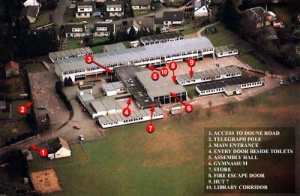Difference between revisions of "Dunblane school massacre"
m (testing timelines) |
m (test) |
||
| Line 1: | Line 1: | ||
| + | {{Event | ||
| + | |timelines=Mass shooting | ||
| + | |start=1996/03/13 11:19:00 | ||
| + | |end=1996/03/13 12:08:00 | ||
| + | |description=Deep event gun control shooting? | ||
| + | }} | ||
{{event | {{event | ||
|wikipedia=https://en.wikipedia.org/wiki/Dunblane_school_massacre | |wikipedia=https://en.wikipedia.org/wiki/Dunblane_school_massacre | ||
Revision as of 21:12, 25 May 2022
| Date | 1996/03/13 11:19:00 - 1996/03/13 12:08:00 |
|---|---|
| Interest of | Mike James, Sandra Uttley |
| Description | Deep event gun control shooting? |
 | |
| Date | 09:35 13 March 1996 - 09:40 13 March 1996 |
|---|---|
| Location | Dunblane, Scotland |
| Blamed on | Thomas Hamilton |
| Type | • • • |
| Deaths | 18 |
| Injured (non-fatal) | 15 |
| Interest of | Mike James, Sandra Uttley |
| Description | A school massacre by an acquaintance of George Robertson, a Bilderberger and later Secretary General of NATO with a range of other connections. |
The Dunblane school massacre was a mass shooting in a school in Dunblane, Scotland, on 13 March 1996.
Contents
Official narrative
A murderous attack by Thomas Hamilton who killed 16 pupils and one teacher. Hamilton was a "Lone nut" with no connections to intelligence agencies or deep politicians and the attack had no deeper significance.
Concerns
Thomas Hamilton was known to George Robertson, and they may have attended the same masonic lodge. Robertson was a Bilderberger who was later made Secretary General of NATO, and had a range of deep political connections.
Response
Gun control laws were strengthened in the wake of this and similar events.
Gun control
A small group, known as the Gun Control Network, was founded in the aftermath of the shootings and was supported by some parents of victims at Dunblane and of the Hungerford massacre.[1] Bereaved families and their friends also initiated a campaign to ban private gun ownership, named the Snowdrop Petition (because March is snowdrop time in Scotland), which gained 705,000 signatures in support and was supported by some newspapers, including the Sunday Mail, a Scottish tabloid newspaper whose petition to ban handguns had raised 428,279 signatures within five weeks of the massacre.
In response to this public debate, the then-current Conservative government of John Major introduced the Firearms (Amendment) Act 1997, which banned all cartridge ammunition handguns with the exception of .22 calibre single-shot weapons in England, Scotland and Wales. Following the 1997 General Election, the Labour government of Tony Blair introduced the Firearms (Amendment) (No. 2) Act 1997, banning the remaining .22 cartridge handguns in England, Scotland and Wales, and leaving only muzzle-loading and historic handguns legal, as well as certain sporting handguns (e.g. "Long-Arms") that fall outside the Home Office Definition of a "handgun" because of their dimensions. The ban does not affect Northern Ireland.
School security
Security in schools, particularly primary schools, was heightened in response to the Dunblane massacre and two other violent incidents in England around the same time: the murder of Philip Lawrence, a head teacher in London, and the wounding of six children and Lisa Potts, a nursery teacher, at a Wolverhampton nursery school. Many schools put up high perimeter fences and door entry systems which exist to this day.
Event
| Event | Description |
|---|---|
| Dunblane school massacre | A school massacre by an acquaintance of George Robertson, a Bilderberger and later Secretary General of NATO with a range of other connections. |
The Official Culprit
| Name | Description |
|---|---|
| Thomas Hamilton | A "lone nut" who shot a class of primary children and their teacher before turning the gun on himself. |